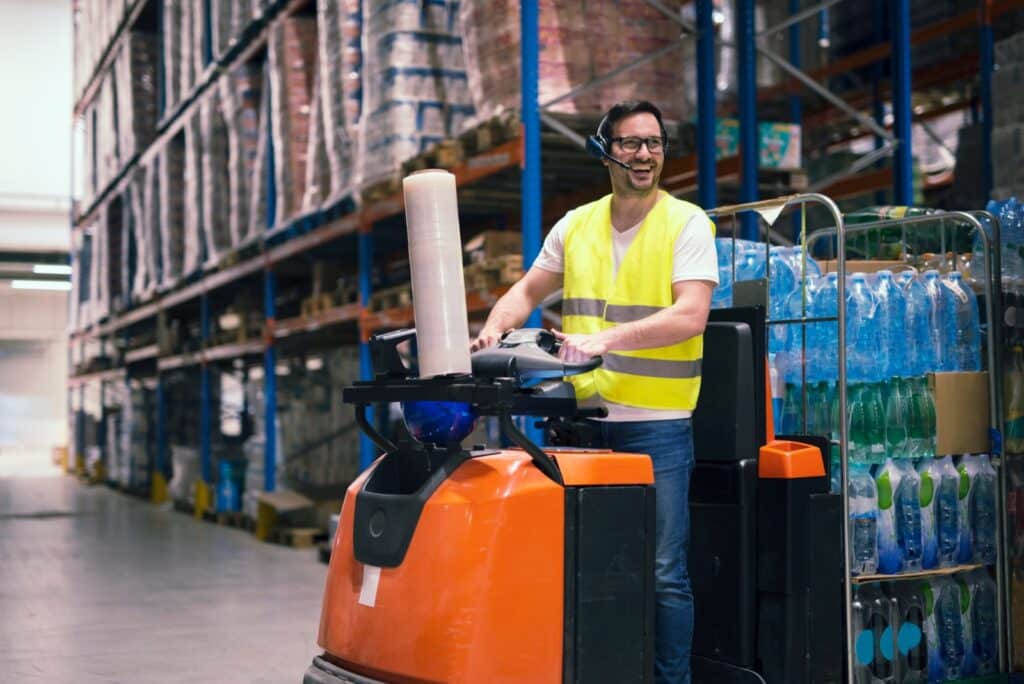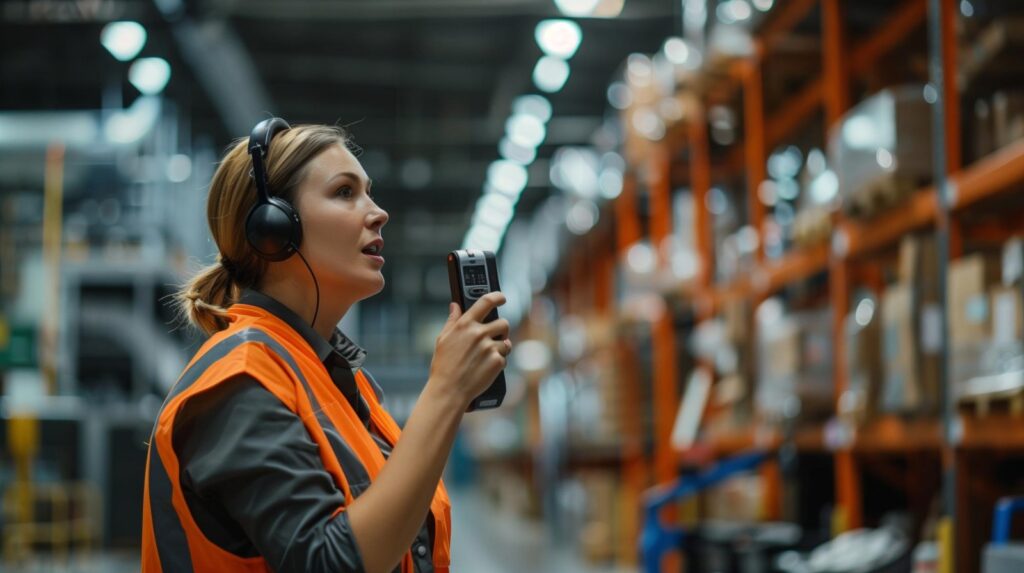Voice-Directed Work: Key Concepts and Best Practices
Voice-directed work, often abbreviated as VDW, is changing the way we work in certain industries. While no longer a brand-new technology, VDW has become essential in many types of businesses, such as warehousing, logistics, and others.
The benefits VDW brings to teams are undeniable, helping workers streamline operations, reduce errors, work hands-free, and boost productivity. With real-time instructions, VDW replaces the need for outdated workflows that rely on paper lists or handheld devices.
Voice-directed warehousing is still a powerful tool to this day that’s used across many organizations. Let’s dive deeper into how this technology works, its impact, and real-world applications.
Voice-Directed Work: Key Terminology and Concepts

Looking at the key terms and concepts used in a VDW context allows you to better understand how this technology works and will give you a better idea of how it’s used in multiple fields. Below, we break down a few need-to-know topics when discussing VDW.
1. Voice-Directed Work (VDW)
VDW is a technology that uses voice recognition to guide workers through tasks. It started primarily in warehouses and was adopted by logistics teams and other industries. VDW systems often use a headset, microphone, and mobile device for instructions or communication.
2. Voice User Interface (VUI)
A VUI facilitates interactions with a computer system via voice commands. It allows for seamless communication between workers and digital systems for hands-free. These systems prioritize clarity, simplicity, and user-friendliness by ensuring voice commands are easy to execute.
3. Speech Recognition
Speech recognition technology converts speech into text using machine learning (ML) and advanced algorithms. They can be challenging to implement since they require a high level of accuracy for efficiency and data can be skewed by background noise or speech variations. However, integrating them into a VDW ensures that systems can better interpret demands.
4. Natural Language Processing (NLP)
NLP is a type of AI that allows computers to understand and respond to human speech in a natural and meaningful way. In VDW, NLP enhances systems by enabling natural conversational interactions for easier communications. While NLP can have its limitations in handling complex language structures, it’s continuously evolving and improving.
5. Warehouse Management System (WMS)
A WMS is a software application that warehouse teams use to manage operations like order fulfillment, inventory management, and shipping. This software integrates with VDW systems to streamline workflows and improve accuracy. This integration can help teams boost operational efficiency, reduce manual errors, and speed up order processing.
6. Order Picking
Order picking involves selecting items from existing inventory to fulfill orders. VDW often optimizes order picking workflows by providing workers with real-time voice instructions to guide them to the right location to select items. These systems make it easier for teams to implement batch picking, zone picking, and wave picking strategies with voice picking technologies.
7. Task Confirmation
Task confirmation involves verifying the completion of tasks with speech feedback to verify accuracy and accountability. This can be done with voice confirmation, scanning barcodes, or verifying RFID tags. Task confirmation is a crucial step in VDW since it ensures that each step in a workflow is properly executed and helps enhance productivity and reduce errors.
Voice-Directed Work: Implementation and Best Practices

The market for voice-directed warehousing solutions is expected to grow from $5.7 billion in 2024 to $24.5 billion by 2034, proving its intrinsic value to the warehousing industry. While voice-directed work systems are frequently adopted for their straightforward use, they still require careful planning to ensure a smooth transition and adoption period. Below, we’ll cover a few guidelines and best practices you can follow for sustainable integration of VDW tools.
Ensure Proper Planning and Preparation
Begin by evaluating your organization’s specific needs and goals to see how VDW can have the greatest impact. From there, you want to ensure your existing infrastructure, such as software and hardware, can support VDW technology. Finally, select a reliable vendor that fits your needs and offers the right solution and support.
Offer Strategic Training and Onboarding
Develop new training programs to get employees familiarized with new VDW features and workflows. You can do this through both hands-on practice and simulations until workers are more proficient with the new technology. Be sure to do this process transparently and always solicit feedback to continually refine training programs.
Integrate with Your Existing Systems
When you’re almost ready to launch, integrate your new VDW systems into your existing ones to ensure continuous data flow. Do this ahead of time to smooth out potential compatibility issues and to ensure data will synchronize in real time.
Track Performance Metrics and Evaluation
Define the key performance indicators (KPIs) you want to measure to track the effectiveness of your new voice-directed work system. Then, regularly monitor performance metrics and analyze data to see how the new VDW system is impacting your operations. Finally, using these insights, you can implement strategies to continuously improve the efficiency of your VDW system.
Future Trends in Voice-Directed Work
With the integration of new technologies like artificial intelligence (AI), the Internet of Things (IoT), and ML, voice-directed work is expected to evolve further and have a greater impact in the future. That said, voice-directed systems on their own aren’t robust enough to make a long-lasting impact on all aspects of workflows, specifically in warehouses, without implementing parallel technologies.
AI, for example, is able to offer more possibilities with fewer limitations. Speech AI, which relies on technologies like NLP, can accomplish more than VDW alone, empowering companies with analytics for predictive maintenance, enabling proactive task management, real-time insights, and the ability to scale as needed. When paired with VDW systems, AI can make a real difference in helping companies streamline resources, cut costs, reduce errors, and work more productively.
Additionally, AI allows for more personalization options in VDW and other systems and can integrate with IoT and other wearable devices. aiOla, a speech AI technology, uses speech in a similar way to VDW systems but takes things a step further by enabling teams to automate tasks by speaking, collect essential data, and optimize operations across the board, from order fulfillment to safety and everything in between.
Improving Productivity Through Voice and Speech
Voice-directed work systems are already enabling teams to work smarter. Voice-directed warehouse technology is helping workers pick items for orders more quickly and with less reliance on manual processes. However, by introducing additional artificial intelligence tools like aiOla’s speech AI, VDW systems can become even more effective by connecting to other technologies and providing deeper operational insights.
Book a demo with aiOla to see how speech AI can impact your existing workflows.


